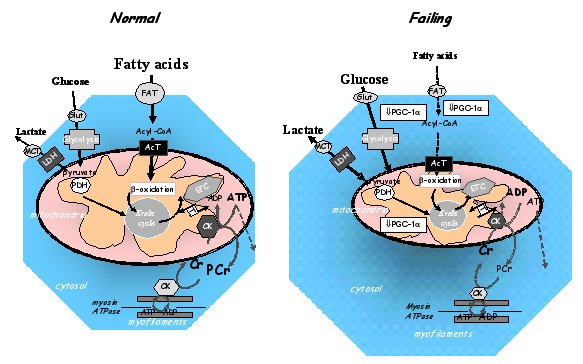
Figure 2: Cardiomyocyte energy metabolism. A. Normal Cardiomyocyte. Cardiomyocyte mainly uses fatty acids that enter the cell membrane through fatty acid transports (FAT) at the cell membrane and (CPT) at the mitochondrial membrane before being used by β-oxidation and electron transport chain (ETC) to produce ATP. Glucose and lactate enter through their respective transporters (Glut and MCT) and are transformed into pyruvate by glycolysis and lactate dehydrogenase (LDH) respectively. Pyruvate enters the Krebs cycle to produce ATP. ATP is then converted into phosphocreatine by mitochondrial creatine kinase (CK). Phosphocreatine is used by localized CK close to ATPases to rephosphorylate ADP. B. Failing cardiomyocyte. In heart failure, fatty acid utilization is blunted, mitochondrial activity decreases and ATP synthesis is impaired. Moreover, decreased CK expression compromises energy transfer within the cardiomyocyte. The possible sites of action of PGC-1α are indicated. (From Ventura-Clapier et al 2008 Cardiovasc Res (review)).